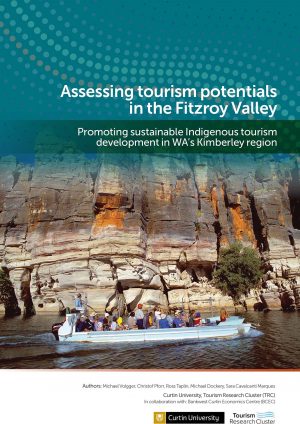Assessing tourism potentials in the Fitzroy Valley
Promoting sustainable Indigenous tourism development in WA’s Kimberley region
The Fitzroy Valley is nestled within the West Kimberley region of Western Australia, and, if considered in its narrower circumscription, is located approximately 400km east of the commercial hub of Broome and 2,500km north of the state’s capital, Perth.
Home to five distinct language groups (Bunuba, Walmajarri, Wangkatjungka, Nyikina and Gooniyandi), the Fitzroy Valley sustains a rich and continuing Aboriginal culture dating back tens of thousands of years.
The dramatic and relatively untouched landscapes paired with immeasurable cultural and environmental significance make it an integral component of WA’s tourism experience.
In a consolidated nature-based destination in which 80 per cent of the population is Aboriginal, Indigenous tourism development in the Fitzroy Valley can play a critical role in increasing employment opportunities for residents on-country whilst creating authentic tourism products that enhance tourism experiences in the region.
Tourism as a form of long-term sustainable development for indigenous communities has been shown to be compatible with Aboriginal culture and connection to land and country, and offers opportunities for economic engagement in harmony with traditional environmental and socio-cultural practices (Fletcher et al. 2016).
This report was commissioned by Environs Kimberley to investigate further tourism potentials for the Fitzroy Valley under three different scenarios: the present situation, if a National Park was to be declared, and if the Kimberley was listed as a UNESCO World Heritage Site.
To achieve this objective, a mixed method approach was adopted consisting of a desktop study to contextualise the study area, a quantitative online survey with potential visitors to the region (2021; n=2,976), interviews with key tourism stakeholders and community members who live and/or work in the region (2021; n=21), analyses of 2016 Census data to identify strategic industries of existing strength, and an estimation of job creation opportunities.




